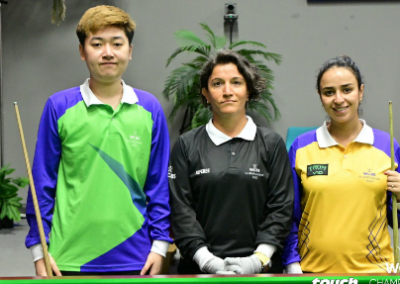PYRAMID
IPC
PYRAMID
Billiards found its way to Russia thanks to Tsar Peter the Great, who, upon returning from the Netherlands in 1705, brought home a billiard table. At that time, tables lacked standardized measurements and were crafted to suit the room’s dimensions rather than a universal standard. While it’s uncertain whether this played a role in the evolution of the Pyramid discipline, it adds an interesting historical context.
Pyramid unfolds on a 12ft table mirroring a standard Snooker table, but with notable distinctions. The cushions are tailored for significantly larger balls than those in Snooker, and the pockets, unlike Snooker’s rounded ones, are cut similar to those in Pool. The challenge intensifies with 68 mm balls attempting to navigate through pocket openings of only 72 mm.
In 1998, Pyramid joined the WPA family under the guidance of the International Pyramid Confederation. The game involves 15 numbered ivory balls and a coloured cue ball, with three distinct variants—Free Pyramid, Combined Pyramid, and Dynamic Pyramid—adding depth to this captivating billiards discipline.












